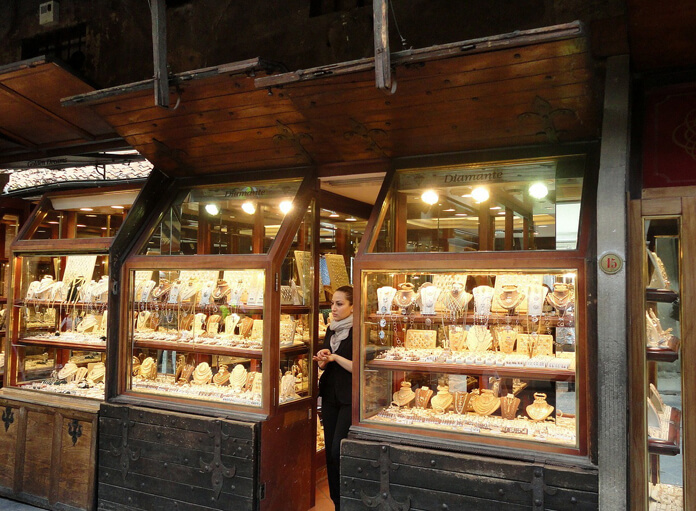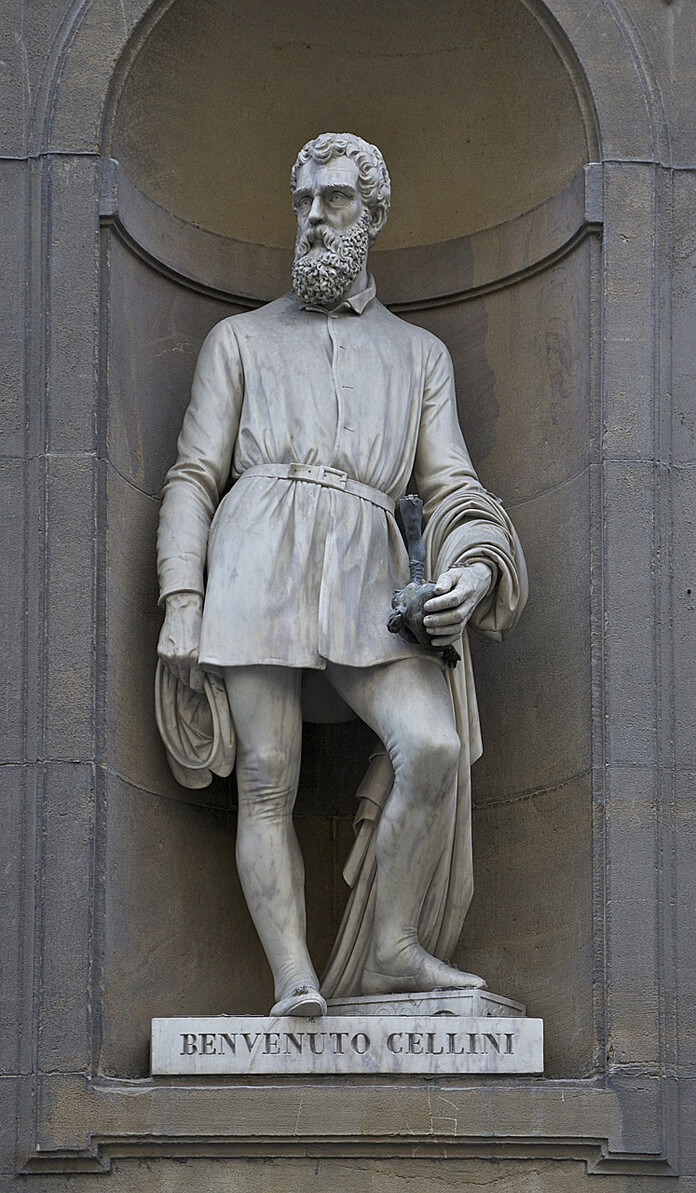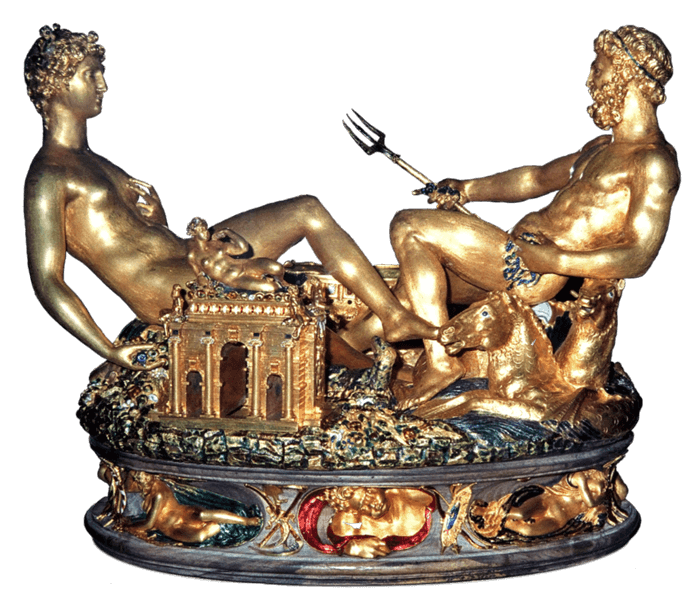As history progressed, the meaning of gold to the people also went through a significant change. During the Renaissance period, the yellow metal took on a new meaning. Instead of a symbol of the heavens, the sacred and godly presence, it would become the icon of power and wealth.
The Renaissance: a period to decorate the elite
From the 1500s, elaborate and ornate golden jewels were designed and constructed to decorate the powerful royalty and societal elite. It was a sign of power and wealth, but most importantly, status.
The most important and powerful kings and queens of the Renaissance period sought out the finest goldsmiths throughout Europe. It was a constant competition of who could (literally) outshine their political and social rivals.
The Ponte Vecchio: a great center of gold work

At this time, there was one place that held a reputation for holding the most talented goldsmiths: the Ponte Vecchio in Florence. Italy’s finest gold workers lined the narrow street with shops to sell to kings, queens, the powerful and the rich. Even today, you can still buy gold jewelry along one of Italy’s most famous streets.

The most sought after goldsmith of all…
One Italian goldsmith was said to outshine all of the rest. Buyers were itching to get their hands on works but the master Benvenuto Cellini.

From a young age Cellini’s father wanted him to be a musician, but he had other plans for himself. At the young age of 13, he insisted on an apprenticeship at the studio of a famed Florentine goldsmith Andrea di Sandro Marcone, also located on the Ponte Vecchio.
He was also known as a troublemaker. On record, he murdered at least three people and tried to kill many more. He was charged for rape, sodomy and was constantly moving throughout Italy to avoid being caught. He frequently got in fights and brawls and was even accused of stealing jewelry from the Pope.
The powerful were able to overlook this, however, because of Cellini genius ability to create gold masterpieces. One King was able to absolve Cellini of all charges if he agreed to make him a piece.
King Francis I of France was known as one Europe’s most flamboyant and art-loving monarchs. He sought that his kingdom would become the center of the Renaissance. In 1540, the king invited Cellini to Paris, commissioning him to make a gold salt cellar.

It took Cellini over three years to complete. The result is considered his masterpiece. It was also so significant as a salt piece, because of the status salt held during the 16th century. It was incredibly important to have salt in the house and King Francis received about 10% of annual revenue from salt tax.
Unfortunately, many of Cellini’s works have been lost over time
The master writes the bible
Despite his spotted past, Cellini is still regarded as the greatest Florentine goldsmith. His writings remain the bible for goldsmith’s art. Here you can find his autobiography, which not only tells the story of his career, but also his personal passions, loves, hatreds and delights.
